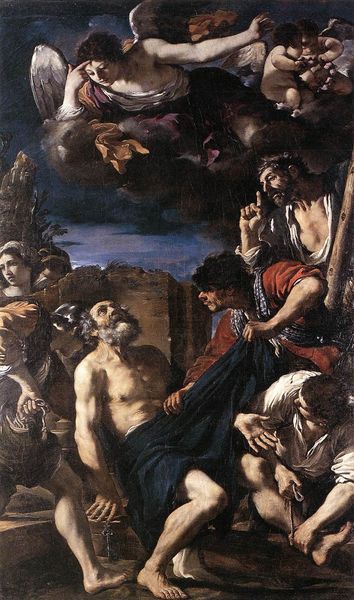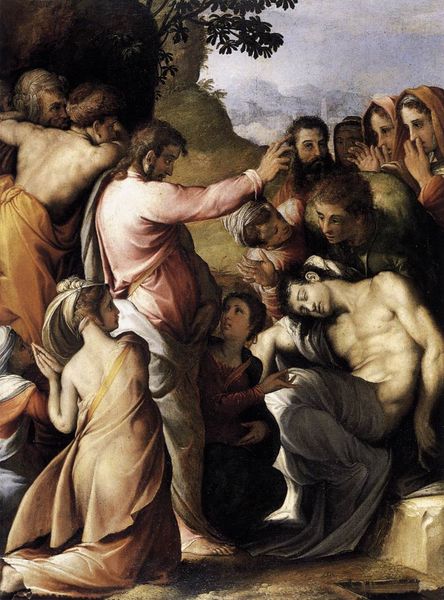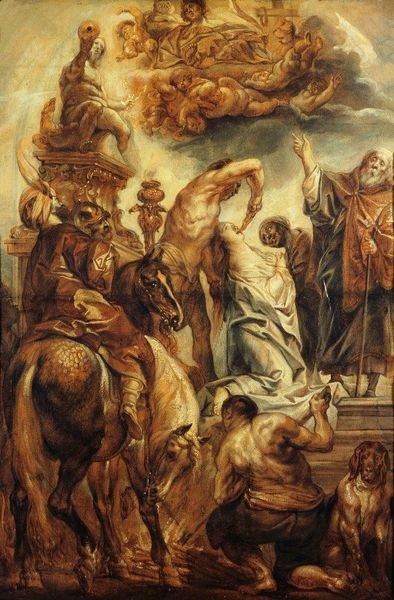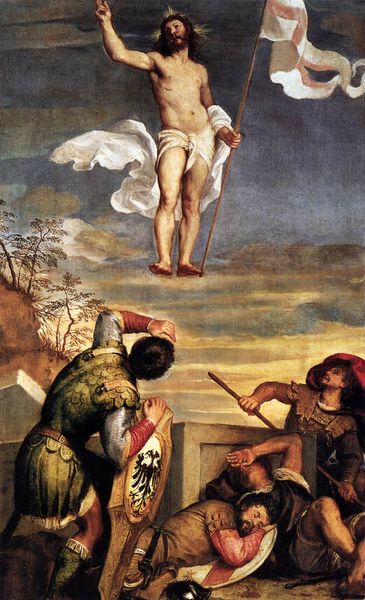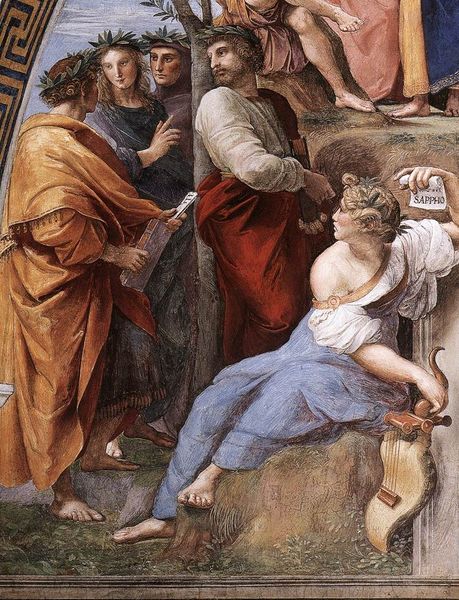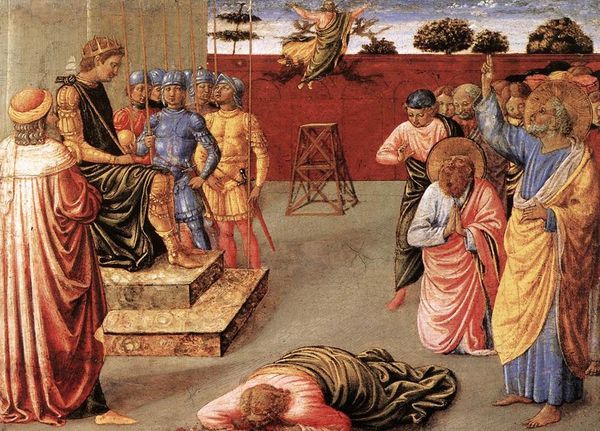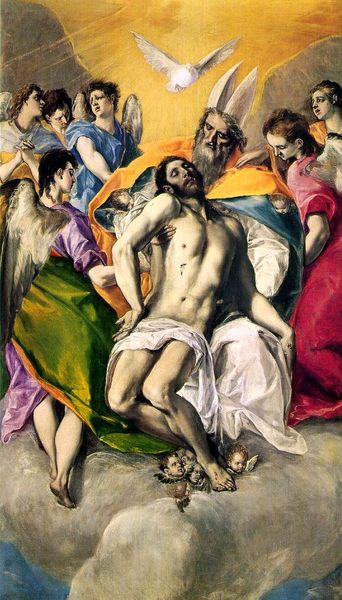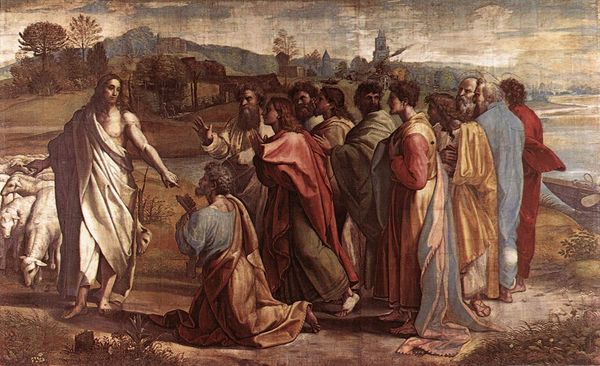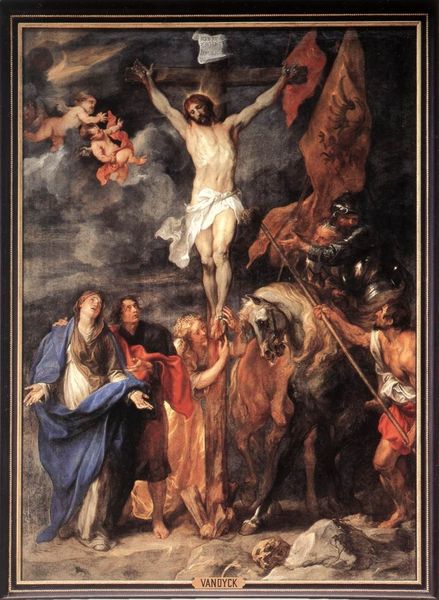
Transfiguration, St Jerome, St Augustine 1500
0:00
0:00
sandrobotticelli
Palazzo Pallavicini-Rospigliosi, Rome, Italy
oil-paint
#
portrait
#
byzantine-art
#
allegory
#
prophet
#
oil-paint
#
figuration
#
oil painting
#
jesus-christ
#
christianity
#
mythology
#
history-painting
#
italian-renaissance
#
portrait art
#
christ
Dimensions: 28 x 39 cm
Copyright: Public domain
Sandro Botticelli painted this small tempera on panel artwork called ‘Transfiguration, St Jerome, St Augustine’ around 1490. The most arresting image is Christ floating mid-air between the Old Testament prophets Moses and Elijah, with the apostles Peter, James, and John cowering below. The raising of the hands is known as a *manus elevatio*, a gesture symbolizing the soul leaving the body. It expresses deep spiritual significance, calling on subconscious feelings of awe, and appears across cultures and eras, from ancient Egyptian art to early Christian iconography. Consider the ancient orant figures found in the catacombs of Rome, where the raised hands signified prayer and communion with the divine. This gesture isn’t static; it evolves. In some contexts, it signifies surrender, while in others, it is a call for help. This potent symbol continues to resonate, tapping into our collective unconscious. It resurfaces, ever changed, in modern art and life.
Comments
No comments
Be the first to comment and join the conversation on the ultimate creative platform.
